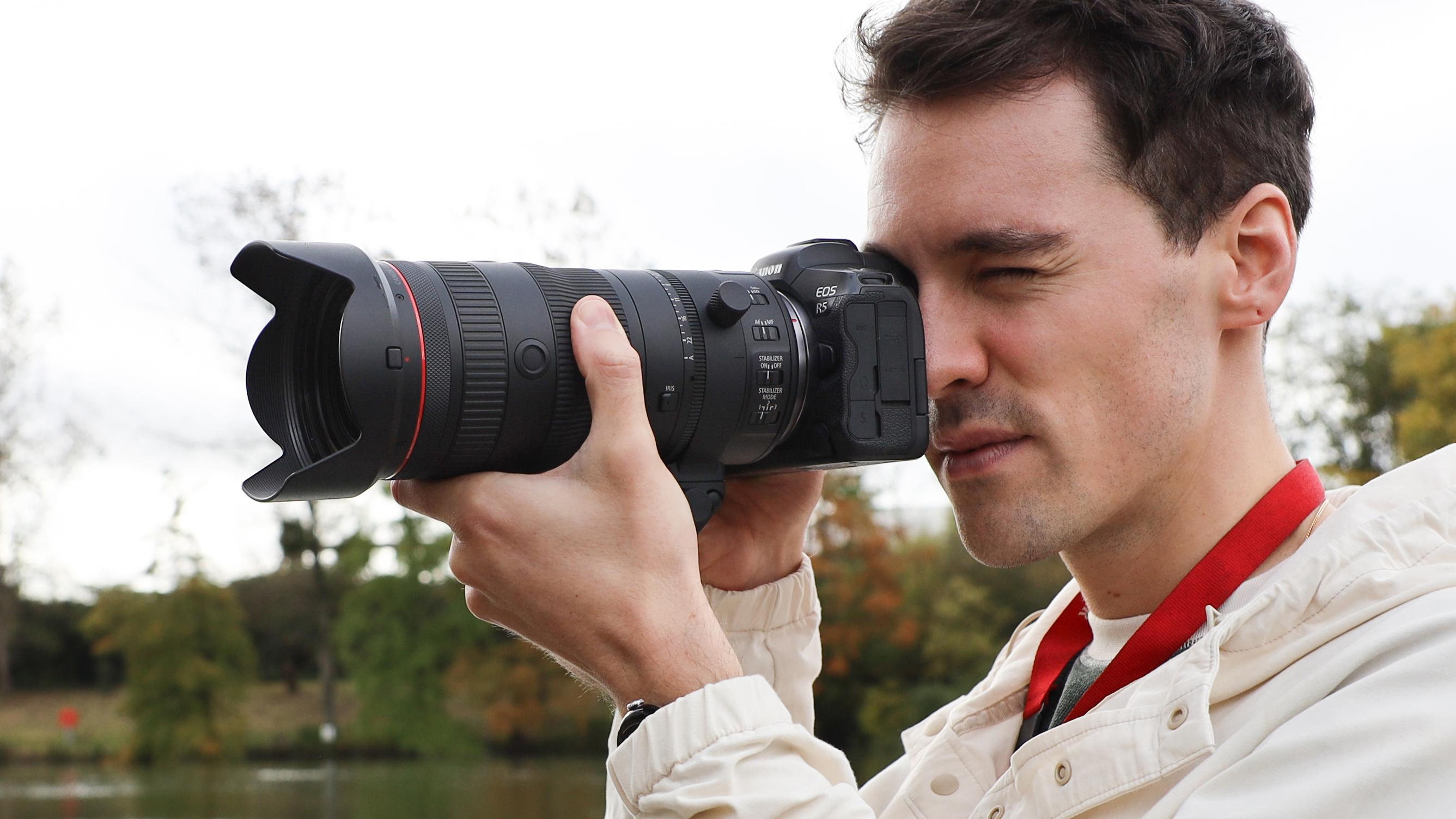
Despite being the lenses that we tend to use the most, is there a type of lens more unexciting than the standard zoom lens? For years and years, we have been stuck with either a 24-105mm f/4 or a 24-70mm f/2.8. These tend to be exceptional lenses, and the workhorse lenses for professional photographers everywhere, but with marginal improvements to image quality or autofocus with each new generation, I find it hard to get excited about a new version.
Autofocus: Dual Nano USM
Lens construction: 23 elements/18 groups
Special optics: 4x UD, 3x Aspherical (2x GMO), ASC, Super Spectra, Fluorine (front)
Diaphragm blades: 11
Minimum aperture: 22
Close focusing distance: 0.45m
Maximum magnification: 0.8x (24mm) 0.29x (105mm)
Image stabilizer: 5.5 stops (OIS), 8 stops (OIS + IBIS)
Lens function buttons: 2
Dust/moisture resistance: Yes
Filter diameter: 82mm
Size (diameter x length): 88.5 x 199 mm (3.48 x 7.84 in)
Weight: 1350g (2.98lbs)
Canon promised a lot when it launched the RF mount, claiming that new and never-seen-before lenses would now be possible. To prove this point, it launched perhaps one of the only exciting standard zooms with the Canon RF 28-70mm f/2L USM. Since then it has been a little quiet on revolutionary lenses. But now, the manufacturer seems to be about to make good on its promise with the Canon RF 24-105mm f/2.8 IS USM Z.
Yes, you read that right, this is a 24-105mm lens with a constant f/2.8 aperture, which has been the dream of so many photographers for so long. Although this one comes with a bit of a twist; instead of being a photography lens that is also good for video, Canon has decided to make a true hybrid lens that walks the line between cine lens and stills lens. Canon has told me that this lens is intended as the first in a new line of hybrid lenses, but they should not be referred to as Z-line or Z lenses.
The new addition of the Z in the lens name stands for ‘zoom’, or rather ‘power zoom’, but not to be confused with other PZ or PTZ cameras, Canon seems to have just stuck with the single Z. But in reality, the lens doesn’t have actually power zoom built into it, instead requiring an additional Power Zoom Adapter for any assisted zooming functions.
Canon has you covered for this, also announcing the PZ-E2 (with USB-C input) and the PZ-E2B (which has an extra 20-pin connector for connecting additional accessories). Both these natively attach to the 24-105mm f/2.8 with screw holes on the lens, and enable smooth zoom control through buttons on the adapter, controls on the camera, or remote control from Canon’s apps. In the spirit of everything to do with filmmaking being staggeringly expensive, the PZ-E2 costs a whopping $999 / £1,149, while the PZ-E2B costs $1,299 / £1,529.
The lens joins the RF 28-70mm f/2L USM as being one of the most expensive RF lenses you can buy, coming in at a steep $2,999 / £3,439 / AU$5,399. So for that kind of money, is this lens really all that it promises to be?
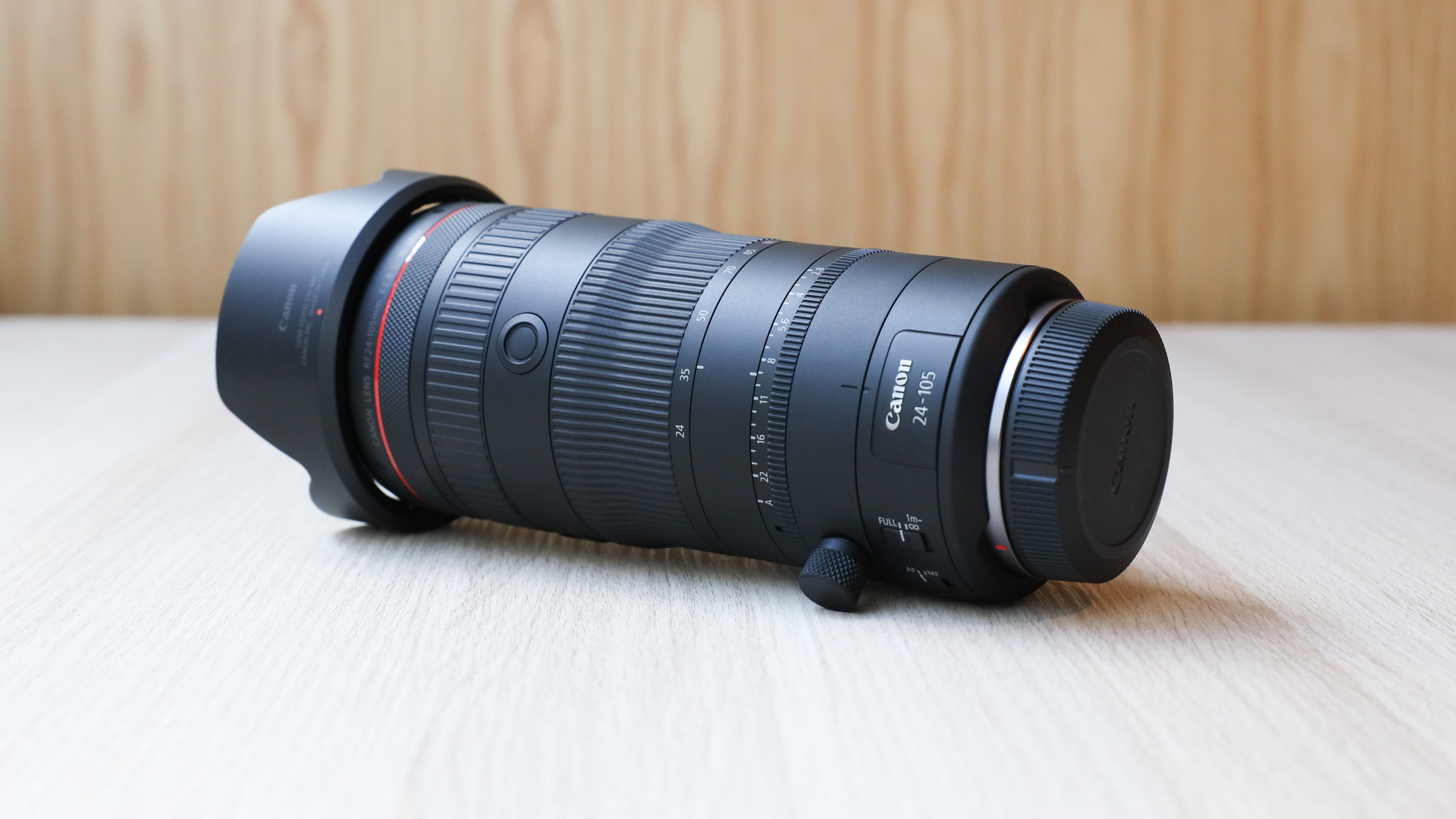
Canon RF 24-105mm: Design & Handling
The Canon RF 24-105mm f/2.8 IS USM Z is a big lens, more akin to something like a Canon RF 100-400mm f/5.6-8 IS USM than any of Canon’s standard zooms, and it makes my Canon RF 24-70mm f/2.8L IS USM look almost compact in comparison. As this is designed as a hybrid lens to straddle the world of cine lenses and stills lenses, if you shoot a lot of pro video then the size will be less interesting as most cine lenses are on the large side, but stills-only photographers might find the length more surprising.
Where big aperture lenses like the Canon RF 50mm f/1.2L USM are usually quite wide but stocky to accommodate their bigger apertures, the 24-105mm f/2.8 has interestingly just gone long – but with not much more girth to it than Canon’s other lenses. It actually almost just resembles a Canon L-series zoom lens, if it was stretched out on Photoshop. Due to its extended length and intended hybrid use, the RF 24-105mm f/2.8 comes with a tripod foot as standard, which perfectly balanced the Canon EOS R5 and lens in my testing.
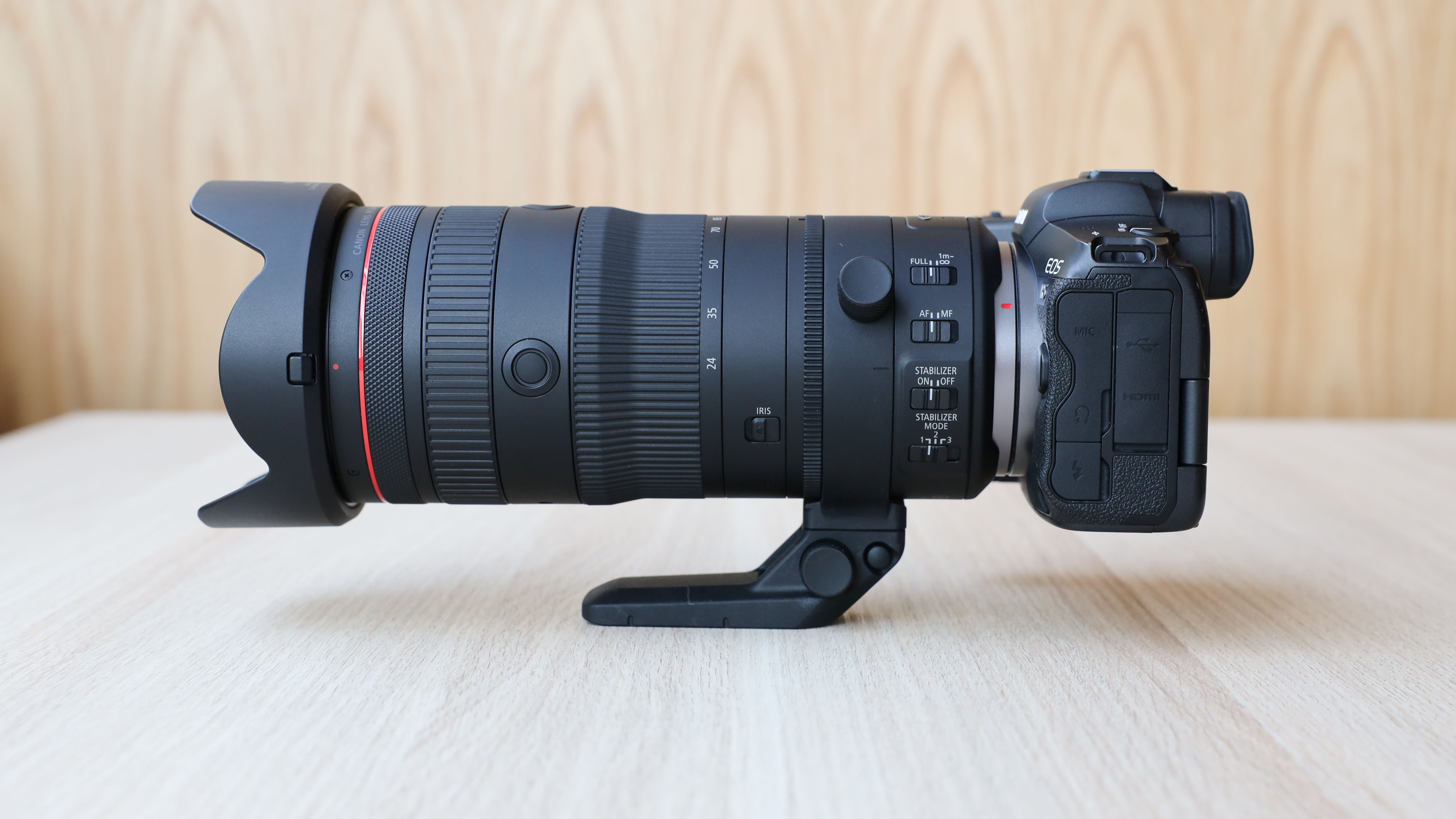
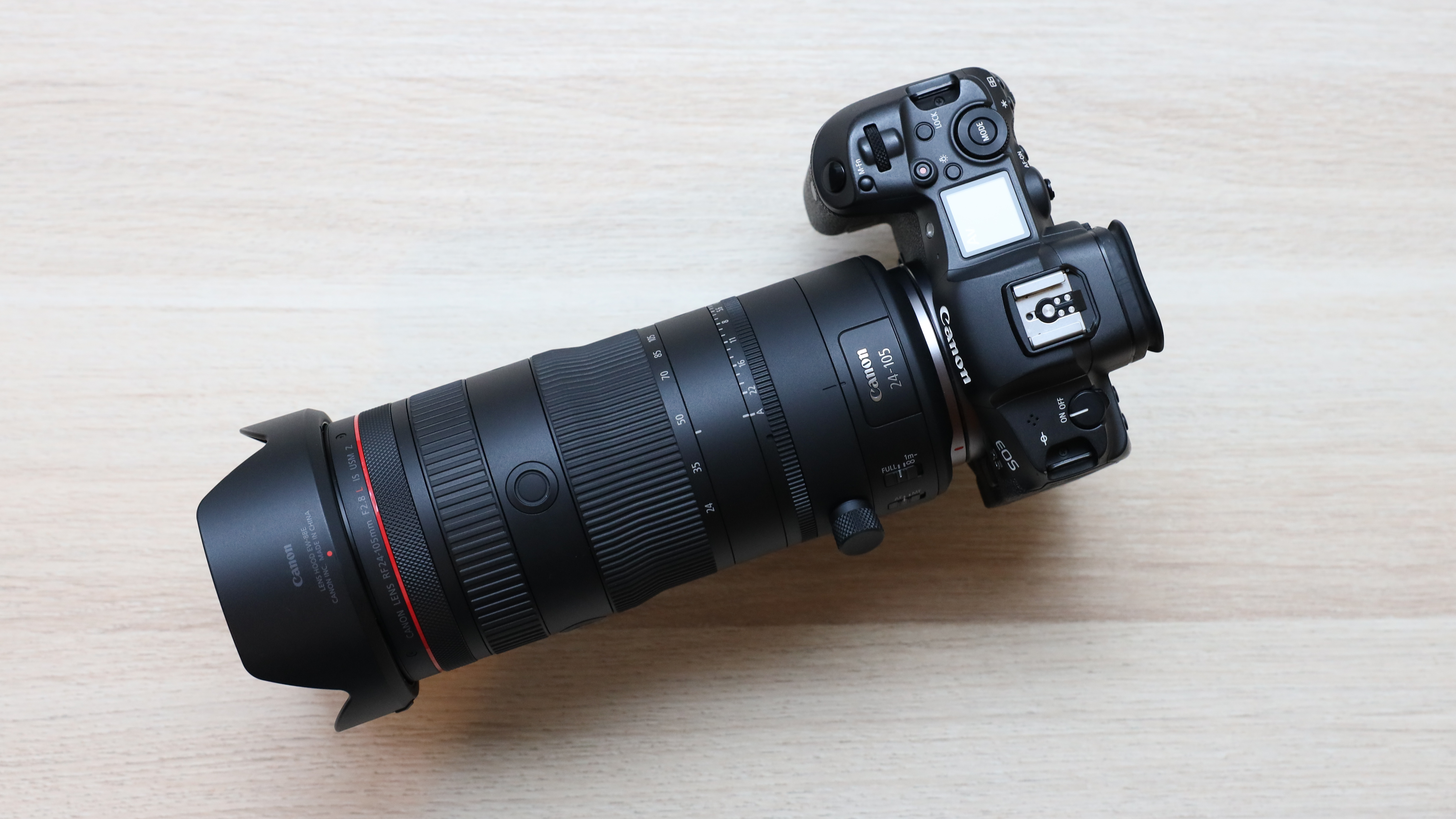
The additional size, though, is not only to accommodate the extra aperture, but also to fit in the new focus and aperture rings. The focus ring on the 24-105mm f/2.8 has been moved up front on the lens, with a wider texture that is slightly different from Canon’s other RF L-series lenses – it's much closer to what you would expect to find on a Canon cine lens, which should work better with external focus accessories.
The lens also fits in optical image stabilization of up to 5 stops, which when paired with compatible bodies can go all the way up to a combined 8 stops.
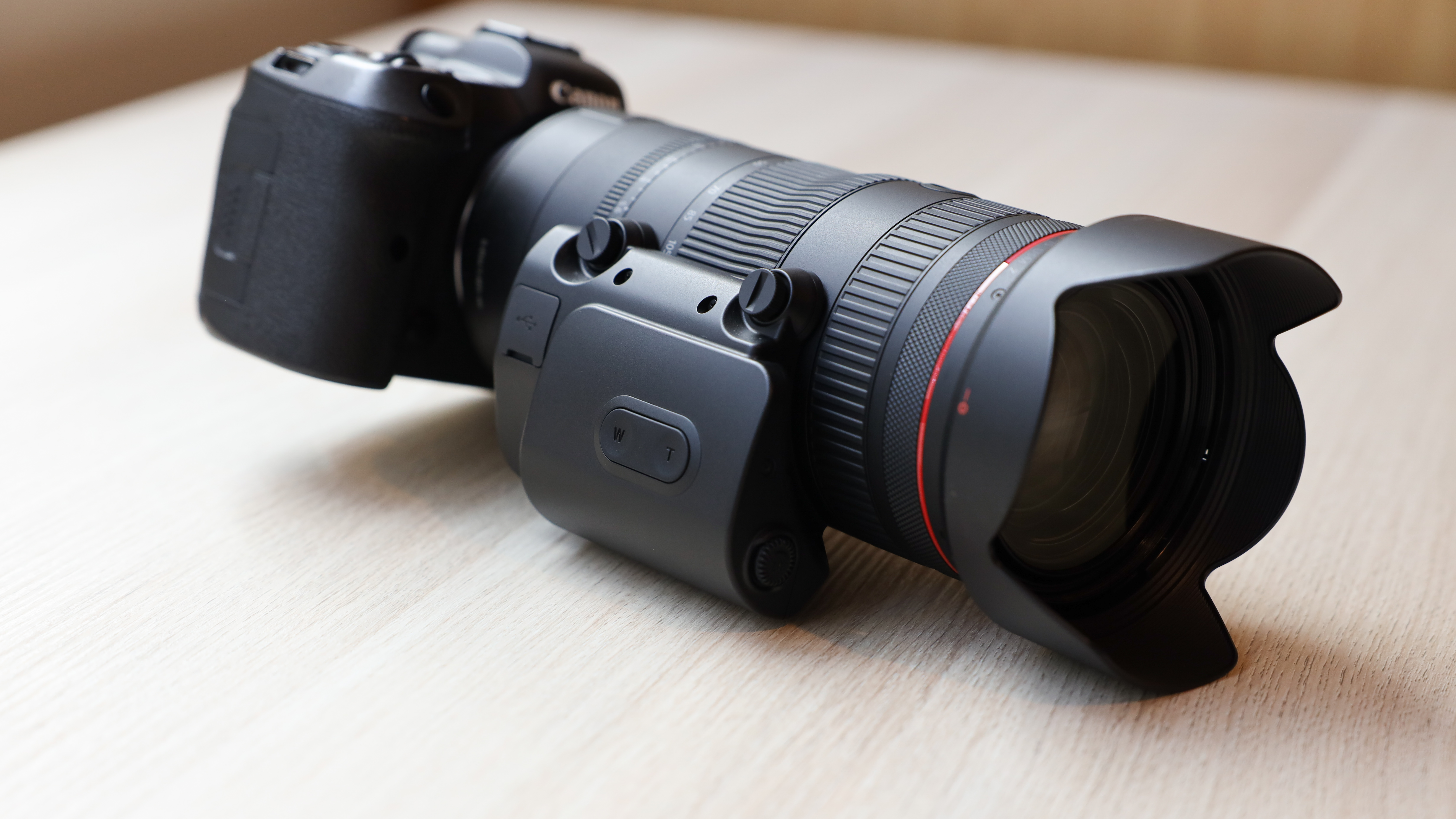
The new aperture ring strangely only works in video. I did ask Canon if this could be something that is rectified with a later firmware update, but there is no official confirmation, with the party line being that the control ring can also be used for aperture.
The aperture ring is silent; there is no switch to turn the clicks on and off, like on a Sony lens. The ring turns very smoothly, although was a little too loose for my personal tastes and was turned just a touch too easily. However, there is a catch to lock the aperture ring in ‘auto’ and then still manually control the aperture using the camera body, if that is your preferred method for video.
Currently if you are in any stills mode then, no matter what position the aperture ring is in, the aperture is controlled by the camera.

Canon RF 24-105mm: Performance
The performance of the lens was exceptional in my initial hands-on testing. All the way from 24mm up to 105mm images are sharp with great contrast. My images also had consistent lighting, contrast, and color temperature throughout the zoom range, which is so essential for professional lenses like this.
I tested the lens with the Canon EOS R5 camera, which is probably Canon’s current most ideal pairing, and the 45MP sensor resolved details beautifully.

Canon’s Nano USM autofocus system has proved itself time and time again, but it is worth saying again just how silent and fast it is, even when it is pushing bigger lenses like this one.
Focusing is very speedy, snapping onto focus points in a matter of milliseconds. When testing the lens on some birds around Canon’s HQ, the subject recognition had no issue locking onto the bird’s shape and tracking it across the viewfinder. Focus breathing is also completely controlled, which as the first is a new hybrid line of lenses is key.
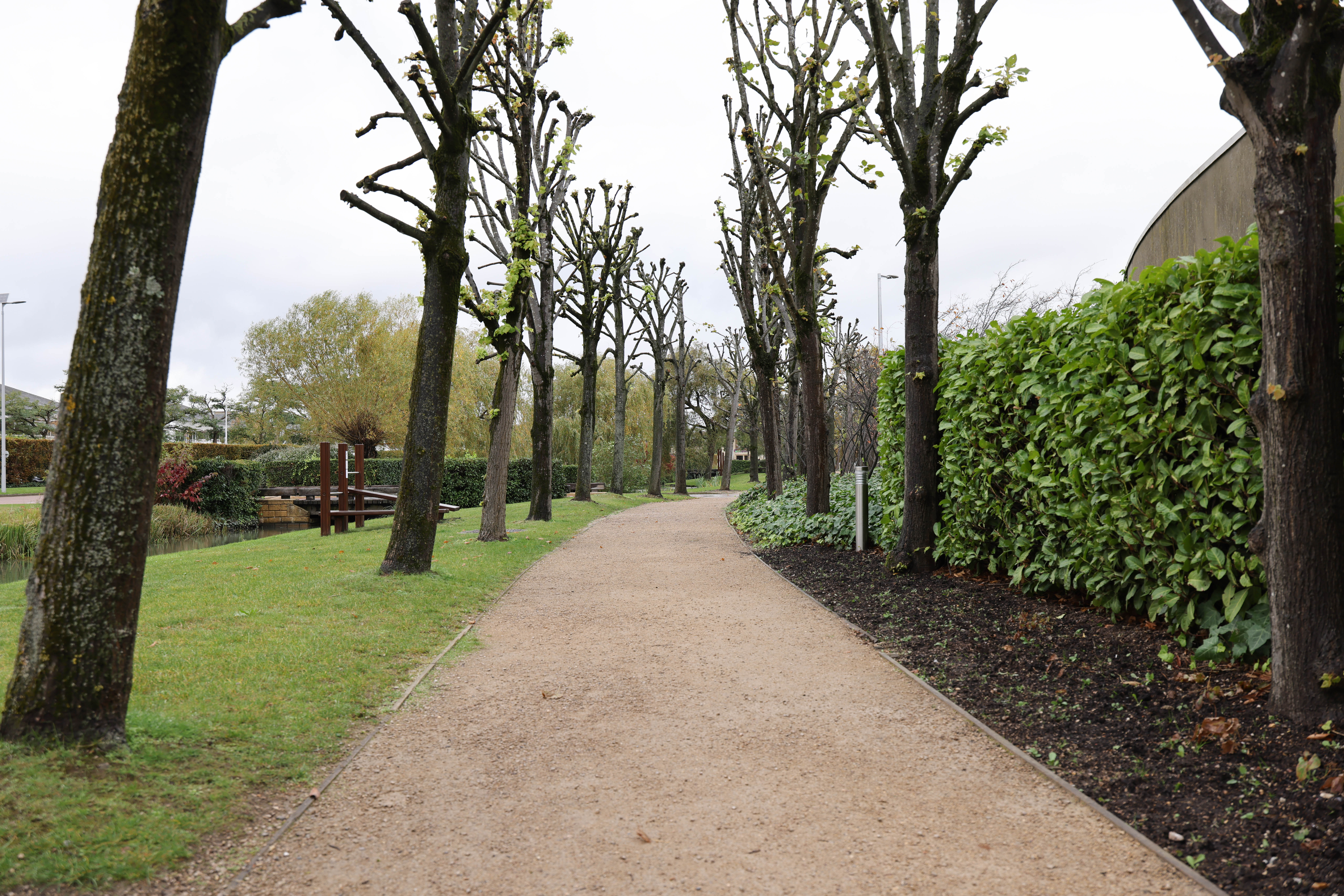

The 24-105mm f/2.8 is capable of up to 8 stops of image stabilization with compatible cameras like the EOS R5 I was shooting on, or 5 stops without.
In my quick sample videos, panning and static shots handheld are smooth without any jitters or Jell-O effects, but I will have to test this further when I get more time with the lens before I can make any conclusions.



Canon RF 24-105mm: Early Verdict
The Canon RF 24-105mm f/2.8 IS USM Z, the first in a proposed series of new hybrid lenses, has made an impressive debut, and many a photographer’s long-held desire for a 24-105mm lens with a constant f/2.8 aperture has finally been fulfilled.
This hybrid lens is designed to cater to the needs of both still and video photography, although the lens comes at a significant increase in size over both the 24-105mm f/4 and 24-70mm f/2.8 models. Cine lens enthusiasts will find its large size unsurprising, although still photographers might be taken aback.
However, the lens delivers exceptional quality from my initial testing, consistently producing sharp results throughout the zoom range in my tests. Regrettably, its price tag is likely to be a major hurdle for all but dedicated professionals in both the still and video realms.

✅ Buy this if...
- You want a constant wide aperture over a big zoom range
- You shoot a lot of video and stills
- Your professional work demands the very best
🚫 Don't buy this if...
- You don't need the extra focal length over a 24-70mm
- You don't shoot using wide apertures
- You don't shoot video







